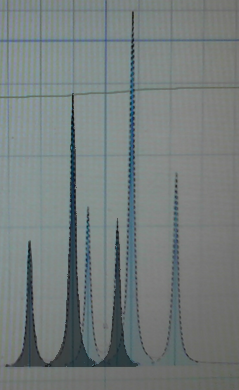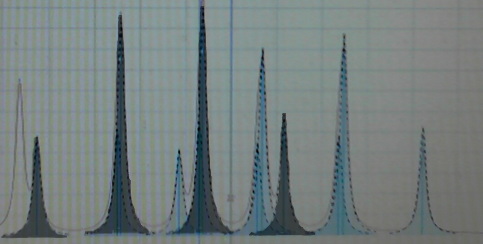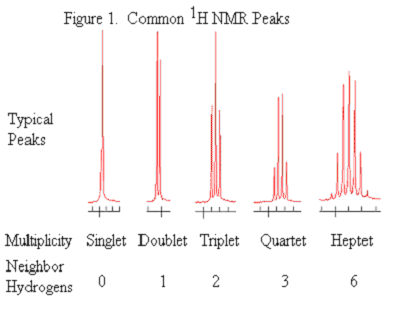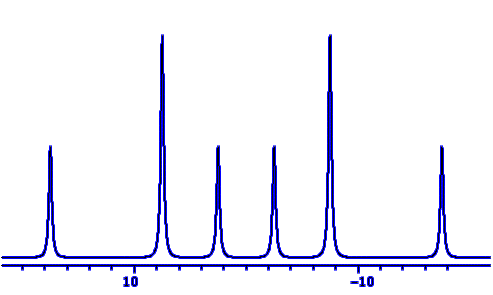How do I distinguish these multiplets in proton NMR?
NOTE: These images were modified from the original to emphasize the multiplets.
- Truong-Son


NOTE: These images were modified from the original to emphasize the multiplets.
- Truong-Son


1 Answer
Well, I would try to identify which peaks resemble the typical symmetrical structure of the peaks you know.
Basically, you may have neighboring protons "communicating" with your protons of interest, splitting their peaks further. For example:
- A triplet may be a not-completely-resolved product of a doublet of doublets.
- A quartet may be a product of a doublet of doublets.
- A hextet may be a product of a doublet of triplets.
- A heptet (7 peaks) may be a product of a doublet of one triplet and one quartet.
- An octet (8 peaks) may be a product of a doublet of quartets.
This only applies if the entire multiplet is not the typical symmetrical "tree" look, such as these:

For example, a general quartet may have variations like this, which are surely not the same environments.

- The first is typical, with three neighboring protons.
- The second is a strong doublet in between a very split weak doublet.
- The third is probably two doublets in similar environments, split in similar ways. There are not three neighboring protons, though.
- The fourth is similar to the third, but is more resolved. In this case, the splitting of each peak on the doublet is not as much as the splitting of the original singlet into the doublet. You might see this maybe in an aromatic compound, where the ortho splitting is greater than the meta splitting.
THE HEXTET MULTIPLET
Here is a similar hextet:

- The first, second, and fourth peaks from the left are the left triplet.
- The third, fifth, and sixth peaks from the left are the right triplet.
I modified your image to mark these triplets.

You can see that if you split up the peaks this way, the darker peaks are one set, and the lighter peaks are one set.
- They are different in intensities.
- The spacing between the triplets are fairly symmetrical.
- These spacings are also similar between the darker and the lighter peaks.
In other words, if you scale the left triplet a bit, you should be able to match the shape of the right triplet.
What it tells you is that this is a doublet of triplets:
two similar proton environments that each have two neighboring protons are both "communicating" with other protons elsewhere.
I think if you found the coupling constant between the first and third peak from the left (the first peaks in each triplet), you should find a similar one somewhere else.
Maybe the protons on carbon 15 have that coupling constant? You should check the coupling constant between the left peaks on the doublets near
(Similar principles apply to heptets, octets, etc. If you have a heptet, you might have a doublet of one triplet and one quartet, if it's not symmetrical overall.)
THE OCTET MULTIPLET
It looks to me like the two protons on carbon 22 are communicating with the ones on the
These quartets were split, likely by the
I've modified your image to mark these quartets. (There are, however, other peaks interfering, so we are ignoring those for this.)

If you compare the shapes of these quartets, they are similar.
- They are different in intensities.
- The spacing between the quartets are fairly symmetrical.
- These spacings are also similar between the darker and the lighter peaks.
In other words, if you scale the right quartet a bit, you should be able to match the shape of the left quartet.

